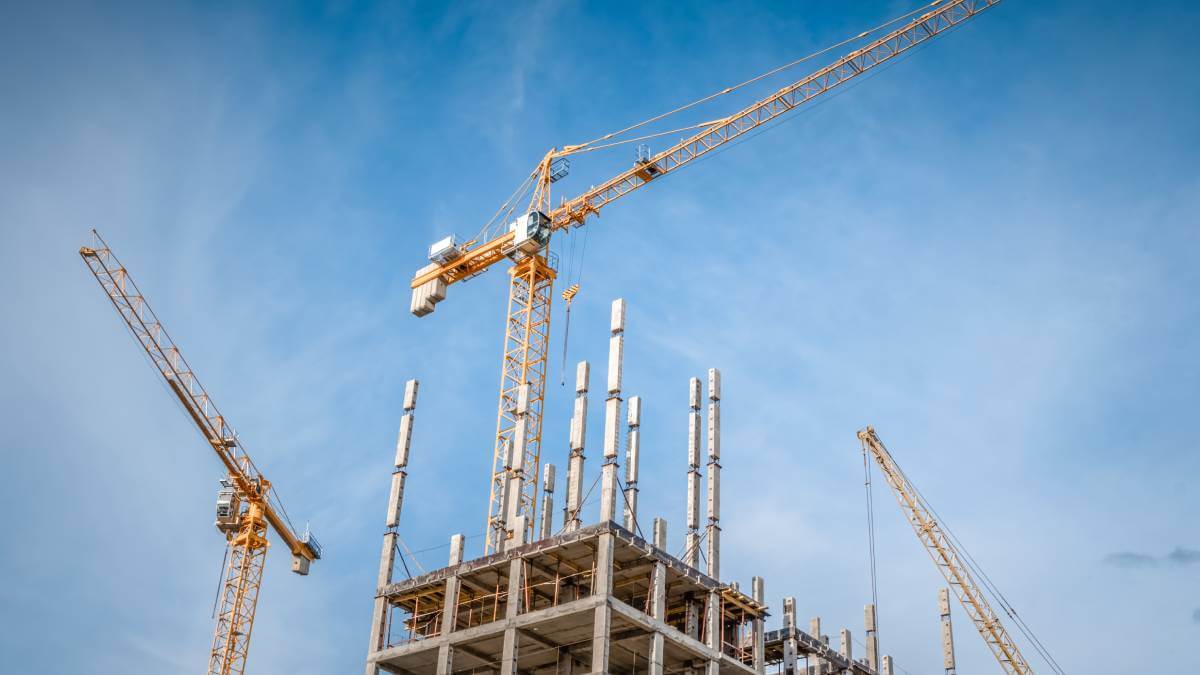In any construction project, the numbers matter — but accuracy goes beyond bricks and mortar. One of the biggest areas where projects can go wrong is the preliminaries. These are the behind-the-scenes costs that keep a site running: the people, the setup, the safety, and the paperwork. Without them, a project simply can’t function.
Preliminaries don’t form part of the final structure, yet they’re the framework that holds a project together. Get them wrong, and you risk delays, disputes, and costs spiralling out of control.
At Bhangals Construction Consultants, our experienced quantity surveyors in London and across the UK help clients manage every stage of a project efficiently — from cost planning and tendering to managing preliminaries and ensuring projects stay within budget.
Understanding Preliminaries in Construction Projects
Preliminaries might sound technical, but they’re simply the costs of running and managing a construction site safely and efficiently. Think of them as the “engine room” of your project — unseen by the client, but absolutely vital to keeping things moving.
In this guide, we’ll explore:
- What Are Construction Preliminaries?
- What’s Included In Preliminaries?
- What’s The Difference Between Preliminaries and Preambles?
- How To Calculate Preliminaries In Construction
What Are Construction Preliminaries?
Preliminaries — often called prelims or general conditions — cover all the costs and resources that make construction possible but aren’t part of the physical building. They include site setup, management, welfare, safety, and compliance costs.
In short, preliminaries are the glue that holds the site together.
They’re widely recognised throughout the UK construction industry under the NBS (National Building Specification) framework and are included in most contracts. This ensures both the client and contractor have a clear understanding of what’s required before any work starts.
Preliminaries often appear within tender documents and cost plans prepared as part of our quantity surveying services in London. They are a crucial part of assessing project overheads, temporary works, and general conditions before construction begins.
What’s Included In Preliminaries?
Preliminaries cover the practical, logistical, and administrative side of a construction project — everything you need to run a site rather than build on it.
Here’s a breakdown of the main areas they cover:
1. Site Setup and Management
Getting a construction site up and running is always the first step — and one of the easiest stages to underestimate in terms of cost and time. Site setup isn’t just about putting a fence around the perimeter; it’s about creating a safe, organised environment where every trade can work efficiently.
Typical setup costs might include:
- Site security and fencing – keeping the site safe, secure, and properly controlled.
- Access routes and signage – ensuring clear routes for vehicles and pedestrians from day one.
- Welfare and office facilities – providing essentials like toilets, canteens, and on-site offices for project teams.
- Waste management – covering skips, waste removal, and recycling throughout the build.
- Plant and equipment hire – from scaffolding and cranes to temporary plant and tools needed for daily operations.
- Even on smaller projects, these items can quickly add up — which is why they’re carefully planned and budgeted at the start.
2. Temporary Utilities and Services
Before the permanent connections are installed, construction sites rely on temporary services to keep things running smoothly. These are the practical essentials that make day-to-day work possible:
- Temporary water and electricity for power tools and on-site facilities.
- Heating, lighting, and ventilation in welfare units or office cabins.
- Portable sanitation and wastewater systems are particularly important on remote or undeveloped sites.
These might seem like minor details, but delays in setting up temporary services can slow down the entire project. Experienced quantity surveyors and project managers will plan them early to keep progress steady.
3. Health, Safety, and Regulatory Compliance
No matter the size or scope of a project, compliance with UK health and safety regulations is non-negotiable. This area of preliminaries ensures everyone on site can work safely and within the law.
Typical costs can include:
- Personal protective equipment (PPE) for all site personnel.
- Safety signage, risk notices, and traffic control systems.
- Health and safety documentation, including site-specific plans and risk assessments.
- Licences, permits, and insurance policies relevant to the works being carried out.
- Fire prevention and emergency response provisions.
These requirements are set out and monitored by the Health and Safety Executive (HSE). Factoring them into the preliminaries from the outset protects both the workforce and the project timeline.
4. Project Administration and Management
Finally, there’s the administrative backbone of any construction project — the management team and processes that keep everything coordinated, compliant, and on track.
This part of the preliminaries often covers:
- Site supervision and management staff who oversee the day-to-day progress.
- Programme scheduling and coordination meetings to keep all trades aligned.
- Temporary works design, ensuring temporary structures meet safety and design standards.
- Testing, inspections, and quality control checks at key stages of construction.
These management costs don’t physically appear in the finished building, but their impact is visible in how smoothly a project runs. Without strong oversight and administration, even the best-designed builds can face costly delays or disputes.

What’s The Difference Between Preliminaries and Preambles?
The terms sound similar, but their meanings are very different.
- Preliminaries deal with the costs and logistics needed to carry out a construction project.
- Preambles deal with the context and interpretation of the contract documents themselves.
Here’s a clearer breakdown:
Preliminaries
Definition:
Preliminaries cover the overarching costs needed to get a construction project up and running — and to keep it operating smoothly from start to finish. These aren’t tied to the physical structure itself, but without them, the build simply couldn’t happen. They include everything from site setup and management to health and safety measures and essential compliance activities.
Purpose:
The aim of preliminaries is to set out all the general conditions, overheads, and temporary works required to support construction. They establish how the site will function on a day-to-day basis — defining responsibilities, safety standards, and logistical arrangements before the first brick is laid.
Examples include:
- Welfare and site facilities such as offices, canteens, and sanitation units for workers.
- Temporary utilities such as power, water, and lighting are used throughout the project.
- Insurance and performance bonds to meet legal and contractual obligations.
- Testing, sampling, and waste management to maintain quality control and environmental compliance.
These costs are essential to a project’s success, providing the infrastructure and organisation needed to deliver safe, efficient, and compliant construction.
Preambles
Definition:
Preambles act as the introduction or preface to a construction document. They set the scene for what follows — explaining the project’s background, context, and the principles that will guide its delivery. In simple terms, they tell everyone what the project is about and how it should be understood before diving into the detailed specifications.
Purpose:
The main role of the preambles is to clarify the intent and meaning of the documents that form part of the contract. They outline who’s involved, the overall objectives, and any key agreements made during the tendering process. This helps ensure that all parties start the project with the same expectations and understanding.
Examples include:
- A summary of the project’s scope and objectives.
- Details of the parties to the contract — such as the client, architect, and contractor.
- Notes on tendering and negotiation procedures.
- Contextual information or background that explains the project’s purpose and approach.
In short, preliminaries outline how a project will be managed day to day, while preambles clarify why the project is being undertaken and under what terms it will proceed. When used together, they create a clear framework for communication, coordination, and successful project delivery.

How To Calculate Preliminaries In Construction
Calculating preliminaries is an important part of cost planning. These figures can vary depending on the type, size, and complexity of the project, so choosing the right method is essential. In most cases, there are two common approaches: applying a fixed percentage to the total contract value or producing a detailed itemised breakdown.
Both methods aim to give an accurate picture of the overheads and management costs needed to keep a project running smoothly — from site setup to completion.
Method 1: Percentage of Total Contract Value
One of the simplest ways to estimate preliminaries is to apply a percentage to the overall contract value. This method gives a quick, broad estimate that works well for smaller or less complex projects where costs are easier to predict.
How It Works:
Start by estimating the total contract value for the project. Then, apply a percentage — typically between 5% and 15% — depending on factors such as project size, complexity, and location.
For example, a straightforward residential build might use a 5% allowance, while a larger commercial or multi-phase project may require closer to 10–15% to account for more extensive management, safety, and site setup requirements.
When to Use It:
This approach is ideal when:
- The project is relatively small in scope or duration.
- Preliminary costs are unlikely to fluctuate significantly.
- Speed is a priority, and a detailed breakdown would be disproportionate.
However, while this percentage-based method is quick and practical, it has its limits. It doesn’t always reflect site-specific conditions or unique project demands — which is why larger or more complex schemes benefit from a detailed cost breakdown instead.
Method 2: Detailed Cost Breakdown
For high-value or technically demanding projects, it’s best to itemise each preliminary cost. This approach divides expenses into three main categories to give a clear picture of how resources are allocated throughout the project.
1. Site Establishment
This covers everything needed to get the site ready before construction begins. It includes setting up offices and welfare areas, installing fencing and signage, arranging early-stage utilities, and obtaining the necessary permits. These costs are usually priced individually to ensure nothing is overlooked.
2. Running Costs
Once the project is underway, running costs represent the ongoing weekly or monthly expenses required to keep operations moving. They include utilities, cleaning, site supervision, security, plant and equipment hire, and general maintenance. Keeping accurate records of these costs helps maintain budget control throughout the build.
3. Project Completion
When construction nears the end, completion costs cover the process of closing down the site. This might involve removing temporary facilities, clearing debris, reinstating access routes, and preparing final documentation such as health and safety files and handover reports. These costs are typically priced per item.
Key Factors to Consider:
Whether you use a percentage method or a detailed breakdown, it’s essential to account for the following factors when estimating preliminaries:
- Project scale and complexity: Larger projects with more staff, subcontractors, or specialist equipment naturally increase overhead costs.
- Location: Site access, local labour rates, and logistics can significantly affect preliminary expenses.
- Duration: The longer a project runs, the more your running costs — such as utilities and management — will rise.
- Regulations: Certain sites may require additional safety measures, environmental protection, or licensing, all of which add to the budget.
- Risk and contingency: Always allow a contingency fund to cover unexpected costs or delays. A small percentage can make a big difference when unforeseen challenges arise.

Why Preliminaries Matter More Than You Think
Preliminaries don’t get much attention, but they’re the foundation of every project’s success. When properly priced and managed, they:
- Keep projects compliant with legal and safety standards
- Prevent hidden costs from appearing mid-project
- Provide clarity between the client and contractor
- Support better scheduling and efficiency
Underestimating them, however, can lead to huge headaches later on — delayed progress, strained budgets, and even contractual disputes.
Furthermore, understanding and planning preliminaries effectively lays a foundation for broader financial control — especially when combined with tools like cash flow forecasting. If you’d like to dive deeper into that, take a look at our earlier post What Is a Cash Flow Forecast?. It shows how forecasting inflows and outflows helps keep your project solvent and responsive to challenges.
That’s why Bhangals Construction Consultants integrates preliminaries into every cost plan and estimate we produce.

Plan Smarter With Bhangals Construction Consultants
If you’re managing a construction project, understanding preliminaries isn’t just useful – it’s essential. These “invisible” costs can make the difference between a smooth, on-budget build and one that struggles to stay afloat.
Whether you’re an architect, developer, or contractor, Bhangals offer professional quantity surveying services in London to guide you through preliminaries, helping you manage costs and ensure every stage of your project runs smoothly and efficiently.
If you’re unsure whether your preliminaries are priced correctly or want expert support with accurate cost planning, get in touch with us today.
We’ll help you set up your project the right way!
